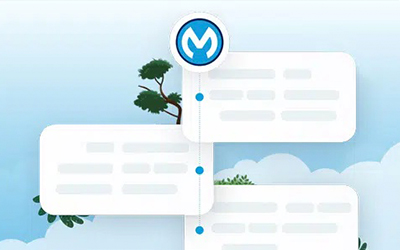In less than six months, MuleSoft will stop support for Mule 3.x on the 20th of March, 2024. Our team wrote in a previous blog about the benefits you can expect after a Mule 3 to Mule 4 migration. But, as the deadline approaches, what are the consequences of waiting for the deadline rather than migrating now?
Migration becomes an emergency
Delaying your Mule 3 to Mule 4 migration can be the difference between innovation and obsolescence. Companies that procrastinate in migrating their systems risk facing an emergency. If you have only a few weeks, what should have been a planned migration that takes place over many months will become a hasty scramble that increases the potential for errors, cost overruns, and operational disruptions. Rather than leave your migration to the last minute, I recommend reaching out to a partner that can help you with this process now.
You run out of time to migrate
Migrating to Mule 4 is not an overnight task; a technical upgrade for around 30 to 40 APIs will take 4 to 12 weeks, in addition to the internal testing time. Migration demands a planned strategy to ensure a successful optimisation and refactoring process, a seamless transition and minimised disruptions. This process takes time, as every step, from assessment to implementation, requires careful consideration. Rushing the process will compromise your solution’s quality.
Technical debt builds up
Delaying your migration will mean more resource demand later, which can economically disadvantage your organisation. You may also spend more time on maintenance and troubleshooting over time. All of these points combined might cause your organisation to accumulate technical debt. While patchwork solutions may work in the short term, they will become complex and costly to manage in time. Starting your Mule 4 migration now minimises the chances that technical debt will increase.
Opportunities for innovation diminish
During a Mule 3 to 4 migration, you have two options: a ‘lift and shift’ migration’ or re-architect. The ‘lift and shift’ method will be fast, limiting the available benefits. It often transfers existing issues from legacy tools directly into the new environment. Choosing to re-architect enables you to maximise your investment in the upgrade by using it as an opportunity to innovate. Your business has likely expanded, and demands have changed since you adopted Mule 3. A re-architect approach enables you to resolve legacy issues and meet new business demands.
You delay new customer experiences
Delaying a Mule 4 migration prevents your organisation from delivering innovative solutions to your customers sooner, putting you at a disadvantage against your competitors. As the market and customer expectations continue evolving, any migration delays mean lost opportunities to improve your business. Migrating to Mule 4 now means that you can leverage the benefits and offer new experiences to your customers while other companies race to upgrade.
Conclusion
Proactively undertaking a Mule 3 to Mule 4 migration is more than a technical necessity; it is a strategic imperative. Right now, you have an excellent opportunity to undergo a planned migration to Mule 4 that allows you to prioritise innovation and deliver an improved customer experience. Delaying migration disadvantages your organisation by increasing operational disruptions and technical debt.
We recently hosted a webinar about end-of-support for Mule 3 and what you can expect when migrating to Mule 4. You can watch the webinar recording on-demand now.
Why choose MakeSense to support your Mule 3 to Mule 4 migration?
Support for Mule 3.x ends on the 20th of March, 2024. While this deadline does not feel urgent right now, you need a few months of lead time to migrate properly and experience the full benefits of Mule 4.
If your organisation has not migrated, consider working with MakeSense. Our experts will ensure a smooth migration that optimises your existing investments. Visit our MuleSoft Upgrades page for more on how we can support your business.









